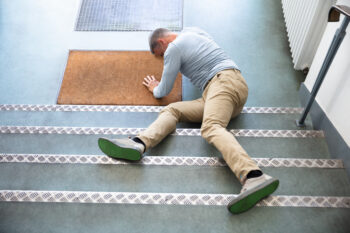Slip and fall accidents can happen to anyone, anywhere, and at any time. While some falls result in minor injuries, others can lead to significant harm and long-term consequences. If you’ve been injured in a slip-and-fall accident in California, it’s essential to understand how to prove negligence to seek compensation for your damages. This article will provide you with a comprehensive guide on proving negligence in a California slip and fall accident, along with the requirements you need to meet.
Understanding Negligence in Slip and Fall Cases:
To establish negligence in a slip-and-fall case, you must demonstrate the following four elements:
Duty of Care: The property owner or occupier must owe a duty of care to visitors. In California, this duty exists for both invitees (people invited onto the property for business purposes) and licensees (social guests).
Breach of Duty: The property owner or occupier must have breached their duty of care by either failing to address hazardous conditions or by creating dangerous conditions.
Causation: You must establish that the breach of duty was the direct cause of your slip and fall accident. It should be shown that the accident wouldn’t have occurred if the hazardous condition had been addressed or if the dangerous condition hadn’t been created.
Damages: You must have suffered actual damages as a result of the slip and fall accident. This includes physical injuries, medical expenses, pain and suffering, lost wages, and any other relevant losses.
Proving Negligence:
Now, let’s explore the steps you need to take to prove negligence in a slip-and-fall accident in California:
Seek Medical Attention: Your health and well-being should be your top priority. Seek medical attention immediately after the accident, even if you think your injuries are minor. Not only is this crucial for your recovery, but it also establishes a medical record linking your injuries to the incident.
Document the Scene: If possible, take photos or videos of the accident scene, focusing on the hazardous condition that caused your fall. Additionally, collect any other evidence, such as witness statements or incident reports, which can help support your claim.
Report the Incident: Inform the property owner or manager about the accident and request that they make an incident report. Make sure to keep a copy of this report for your records.
Preserve Evidence: Preserve any physical evidence related to the accident, such as torn clothing, footwear, or any objects that contributed to the hazardous condition.
Gather Witness Statements: Obtain contact information from any witnesses present at the time of the accident. Their statements can provide crucial support in establishing the property owner’s negligence.
Consult an Experienced Personal Injury Attorney: Slip and fall cases can be complex, and having legal guidance is crucial to navigating the legal process effectively. An experienced personal injury attorney will assess the merits of your case, gather additional evidence, and represent your best interests throughout the legal proceedings.
Prove Notice: In some cases, you may need to prove that the property owner had prior knowledge of the hazardous condition. This can be established by showing that they either created the dangerous condition or had reasonable time to address it.
Establish Reasonable Care: Demonstrate that a reasonable property owner or occupier would have taken appropriate steps to prevent the slip and fall accident. This may involve showing a failure to maintain the premises, inadequate warning signs, or a failure to address known hazards.
Requirements in California Slip and Fall Cases:
In addition to proving negligence, it’s essential to understand the specific requirements for slip and fall cases in California. These include:
Statute of Limitations: In California, the statute of limitations for personal injury cases, including slip and fall accidents, is generally two years from the date of the incident. Failing to file your claim within this time frame may result in losing your right to seek compensation.
Comparative Negligence: California follows the doctrine of comparative negligence, meaning that your compensation can be reduced by the percentage of fault assigned to you. Even if you were partially at fault, you may still be eligible for compensation.
Proving negligence in a slip-and-fall case can be challenging, but with the right approach and legal support, you can seek the compensation you deserve. If you’ve been injured in a slip and fall accident in California, don’t hesitate to consult Timothy J. Ryan & Associates, a trusted personal injury law firm with a track record of successfully handling slip and fall cases. Our experienced attorney
Contact us today for a free consultation and let us help you pursue justice and fair compensation for your slip and fall injuries.
Proving negligence in a California slip and fall accident requires a thorough understanding of the legal elements and requirements. By following the steps outlined in this guide and seeking professional legal assistance, you can strengthen your case and increase your chances of obtaining the compensation you deserve. Remember, timely action is crucial, so consult an experienced personal injury attorney as soon as possible to protect your rights and pursue justice.
